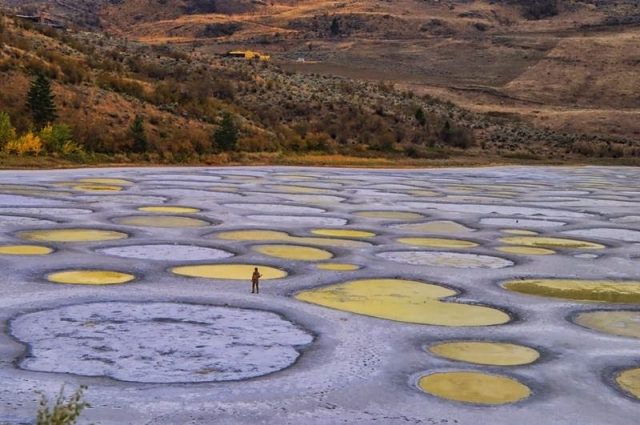
Question 1A. The spotted lake in Canada exhibits effective complexity as its appearance falls under total randomness but its creation stems from order. The lake becomes spotted when the water level is low, and the walkways are caused by high deposits of minerals like magnesium sulfate, calcium, and sodium sulfate. Each of the pools has a unique hue, which is also due to the dissolving of minerals. I would say that the spotted lake falls in between order and disorder. The science behind the spots are caused by minerals and crystals, but the patterns they create on a macro scale look random and disordered. The complexity of the system is unknown to me since I am unsure of the specifics as to why these circular patterns form. There is not much research that describes this. I assume that many complex factors cause the formations, but it could be attributed to a simple scientific phenomenon regarding mineral deposition.
Question 1B. The Problem of Uniqueness
I think that the issue with uniqueness in digital generative art and digital art in general does diminish the “aura” and uniqueness of the piece. Once exclusivity is diminished, the appeal of uniqueness and something being special because of scarcity also decreases. This is not necessarily the most important aspect to an artwork as there are many other factors that make art “good art” that don’t rely on uniqueness. Although digital generative art does create a unique and original artifact rather than copies of digital work, the amount of uniqueness of the artwork is limited. Usually some small parameters are changed, some things are moved around, and colors or movement are altered, but the basic premise is the same. The limited range of the uniqueness of digital generative art makes the original and unique generated artifacts almost the same as copies of an artwork. I think that uniqueness is indeed an issue with digital generative art, but in our increasingly digital world, it is not a large issue.
